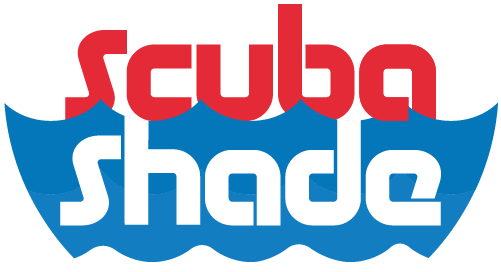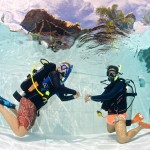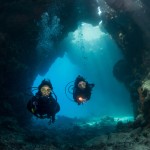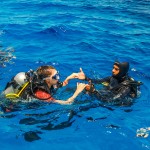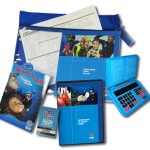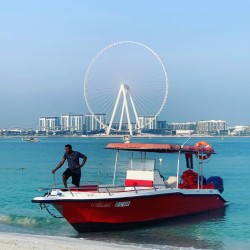Diving in Dubai offers the opportunity of a lot shipwreck dives. But you need to be at least PADI advanced open water diver (or equivalent) to this kind of dives. Dubai also offers shore dives which is a perfect place for training.
Depth: 29m
Difficulty: Advanced Divers
An interesting dive not only for Zainab's illicit past, but also for her present day marine life.
Zainab, formerly called the Seasroun Five, sailed under a Georgian flag and was involved in the illegal transportation of light fuel oil from Iraq when she went down. She was a general cargo ship with two holds forward and the machinery, bridge and quarters to conceal her illegal cargo, her holds had been converted to hold the oil. She was carrying about 1,300 tones of fuel oil when she was deliberately sunk by her 11 man crew to avoid being boarded by the US Navy, who were enforcing UN sanctions on Iraq. The sinking resulted in a major oil spill on the northern Gulf coast, and caused serious concern to the local gas processing plant as she sank within a few hundred meters of their offshore gas pipelines. The story was documented by Gulf News throughout April 2001.
Marine Life
During the time the Zainab has been down, it has attracted a large variety of marine life. The wreck is carpeted with small oysters, and juvenile fish weave their way in and out of their shell homes. Most avoid contact with divers, but some are very inquisitive and allow you to get close to them. You may find large rays resting on the seabed, and huge shoals of barracuda circling the wreck. You will often find large shoals of yellow snappers swimming round tile various masts towards the bow, and there's usually a shoal of batfish that congregates near the bridge and wheelhouse.
Depth: 23m
Difficulty: Advanced Divers
A site well worth exploring and a good place to watch the cuttlefish swim by.
Sunk by the White Sea Shipping Company in 1998 to form an artificial reef, the anchor barge is a large upside-down wreck. She rests on her forward machinery cabin in 23m of water, and the roomy open area between her deck and the seabed means that there's plenty of hiding space for sea creatures. The cabin contains anchor winches and the cargo and ballast transfer pumps, with her bulk being supported by the cabin and deck equipment. The wreck lies on a ridge of rock a meter high. Not all operators dive this wreck, due to its distance.
Marine life
Scallops, oysters and small clumps of black sea squirts have taken hold of the wreck, along with hydrocorals. On the surrounding sand and rocky bottom, flatworms (black with a colorful orange edging) abound in February and March. You also have a good chance of seeing cuttlefish on this site. These amazing creatures have a neon-like line that runs around their mantle, and they can alter their color and shape to blend in with their surroundings.
Depth: 18m
Difficulty: Open Water Divers
This old barge is now home to plenty of barracuda, particularly in the cooler months.
Although the circumstances of loss aren't fully known, the fact that the vessel's engine and steering gear have been removed would suggest that a local fisherman sunk this barge to form an artificial reef. In the winter of 1997, a fisherman told Blue Planet Diving about the wreck and its location.
The barge sits upright in 18m with her bow facing 340°. The seabed is flat and feature less and there are a few bits of wreckage scattered about. Unusually, for a barge, the wheelhouse and engine room are double-storeyed.
Several windows and doors give divers easy access to the interior, but when you enter the small rooms be careful not to stir up the silt, which dramatically reduces the visibility. The top of the wheelhouse is at 10m and covered in algae and shells. You'll find small shoals of surprisingly tame fish congregating around it. The small wreck is easily circumnavigated several times in a dive. Take your time inspecting the outside hull and look for small gobies with shrimp in their sandy homes on the seabed. Then explore the UAE Diving hold before you go in and out of the wheelhouse. Check out the unusual anchor still sitting on the bow.
Marine life
During the winter months this wreck is surrounded by shoals of barracuda, although during the summer months they move to cooler, deeper water. Barracuda Barge is also home to the usual yellow snappers. These fish literally engulf the wreck, swimming above, around and within it and squeezing into every available nook and cranny, no matter how small. The cowries you'll see here are a similar rusty-brown color to the ones found on MV Dara, which is a result of them absorbing the iron oxide from the rustin barge. The wreck is covered in orange, red, brown and black sponges, and lots of barnacles with their feathery arms that feed on small algae and other morsels. Several types of nudibranchs inhabit this wreck, their gills pulsing as they breathe (look to see if you can lind their eggs in circular patterns close by). You'll also notice a white, fern-like plant; take car as these are stinging hydroids and may give you a nasty sting or rash.
Depth: 80m+
Difficulty: Tec Divers
This wreck has an interesting story behind it and plenty of scope for exploration.
The Energy Determination sailed with ballast from Bonaire, Netherlands Antilles on 5 November, 1979. She was bound for Das Island in the Gulf, where she was due to load a cargo of crude oil. However, at 1am local time on 13 December, as the Energy Determination was passing through the Strait of Hormuz, about 64km from Ras AI Khaimah, there was an enormous explosion. A fire broke out near the number 9 starboard tank, which contained 354 tons of slops. Fire and smoke quickly spread to the engine room and living quarters.
The captain decided to abandon ship and the life rafts were deployed. Of her 38 man crew, 37 were picked up from their life rafts by an Omani naval vessel that was in the area. Meanwhile, the fiercely blazing Energy Determination, visible over l5 km away and with burning fuel oil leaking from a hole in her starboard side, began to list and settle by the stern.
Marine life
The forward 25m section of the hull is covered in yellow, white and red soft corals, and some lime green whip corals.Strong currents allow these corals to grow and when you swim down, their bright colours glow in the gloom. The fish are big and tame on this site. Among other creatures, you may see large, rather frightening, but surprisingly tame marble rays, or even a whale shark. One has been photographed at close quarters on this wreck and a particularly lucky dive group were on the wreck when a whale shark party of five appeared.
Depth: 15m
Difficulty: Open Water Divers
A small, accessible wreck that has been claimed by hammour as their home.
The vessel lies upright in 12-l5m of water. Her hold contains a cargo of pipes that make a perfect home for hammour which is how the site obtained its name. The wheelhouse is intact. but all the 'goodies' have been removed. It's not known precisely when this wreck was sunk, but judging by the abundant marine growth on her, she's been resting on the seabed for at least 25 years and is home to many fish.
Marine life
The wreck is not often visited by divers, which means that the fish are reasonably tame. These shallow wrecks are often home to the more brightly colored reef fish like the orange dotty back, and their less colorful cousins, the Gulf dotty back. Keep an eye out for the several varieties of blennies to be found here. It's amazing how these colorful fish manage to squeeze into the tiniest of spaces, even trying to hide inside empty barnacle shells! They can be seen waiting near or inside their little holes with just the top of their head sticking out, ready to dart out of sight at the first sign of danger. Arabian angelfish can be seen all over the wreck, picking over the encrustations, and you might also spot some moon wrasse.
Depth: 23m
Difficulty: Advanced Divers
An easy wreck to navigate, with a number of interesting marine inhabitants to observe
This is another of the wrecks that has been sunk by a local fisherman in close proximity to the Neptune 6's marker buoy. Under international maritime law, wrecks that could be a hazard to shipping must have a marker buoy, known as a cardinal marker buoy, to indicate where there is clear water to passing vessels. However, tie upkeep and maintenance of these buoys is costly (in excess of US$50,000 a year), so fishermen understandably tend to sink vessels near to existing marker buoys, rather than incur the cost of a new buoy. The HB6 ended up here when she drifted onto the breakwater of Port Khalid in Sharjah during a storm on 18 February, 1982. The result was a total loss insurance claim. She was later raised, towed to her present location and sunk. Among the sights here are the barge's drop-bottom doors, which were hydraulically operated, and the two cabins that housed the hydraulic gear on the stern. There's also a large cavity on the starboard side, which is the result of her collision with the breakwater stabits.
Marine life
We once found empty cypraea pulchra cowries here when exploring one of the holes under the wreck. Known locally as 'four-eyes: these beautiful shells are light pinkish brown and have two chocolate brown blotches at each extremity. Batfish will often follow you nearly all the way to the surface on your ascent. These large fish seem unafraid of divers; the fact that they're not targeted by fishermen could explain their friendliness.
Depth: 27m
Difficulty: Advanced Divers
It's easy to become completely engrossed in this interesting dive, so keep an eye on your bottom time.
Once used by the UAE armed forces for target practice, the Jasim now rests on her port side, in 26-27m of water. She's broken into three large sections. The stern section consists of the engine room and accommodation, with the large single propeller and rudder still in place. The middle cargo section is a tangled, confused collection of broken hatches, rigging, old vehicle parts and lorry wheels. And the bow section still remains more or less intact with lamp rooms and deck winches
Marine life
This wreck offers the opportunity to see the usual west coast marine life, including several species of brittle stars and cowrie shells. The shells are normally nocturnal, but on this site you can usually find one or two during the day. There are also many hydrocorals, orange sponges and sea squirts. Although this wreck was sunk 20 years ago, the marine growth is not as advanced as it is on some of the west coast's other wrecks.
Depth: 36m
Difficulty: Open water Advanced and Advanced Divers
An island sanctuary for magnificent corals, turtles, rays and large pelagic fish.
Jazirat Sir Bu Na'air is an island that lies 70km off the UAE coast. Measuring just over 1 km long by 1.5km wide, it's a UAE military outpost and coastguard station, but also a protected turtle breeding area. There are no restrictions on sailing or diving near the island, but it is a sensitive military base so landing is not advisable (although you do occasionally see people picnicking on the beaches). In 2000, HH Dr Sheikh Sultan bin Mohammed AI Qassimi, Supreme Council Member and Ruler of Sharjah, issued Administrative Order No.3 that banned all activities considered harmful to the environment of Jazirat Sir Bu Na'air island. The six article order seeks to halt the deterioration of the island's environment protect its marine life, and develop its natural resources. This means that fishing all species of turtle, collecting their eggs or damaging their nesting beaches along the island's coastline is strictly prohibited. The order also bans any activities that could threaten the safety of the island's many resident and migrating bird species.
Marine life
The island is rarely visited by divers or fishermen and the resulting lack of disturbance encourages prolific shoals of fish. There are numerous large pelagic fish, spotted eagle rays, barracuda and large rays. It's a long journey to the island, but the diving and snorkeling at Jazirat Sir Bu Na'air is definitely worth the trip.
Depth: 21m
Difficulty: Advanced Divers
One of the newer wrecks, she is home to unusual cargo and varied marine life.
Lloyds Casualty Register notes that the Mariam Express was overloaded when she encountered strong winds and moderate seas in-route to Iraq. She took on water and sunk rapidly. All crew were rescued.
Marine life
After only a few months of submersion, the Mariam Express wreck boasted a variety of fish life, which increases with time. Large barracuda hang out at the bow, enjoying the currents, while juvenile barracuda hide in the hold with the crockery and bedding. The wreck is smothered with small oyster shells, and between the gaps you'll find numerous colonial ascidians or sea squirts in different colors - white, yellow, green, red or orange, as well as small anemones. The wreck also hosts the usual snappers, pennant fish and jacks. You may find a pair of resident sabretooth blennies, but their camouflage is excellent, making them difficult to spot
Depth: 18m
Difficulty: Open Water Divers
The disastrous sinking of the MV Dara has resulted in a difficult, but rewarding wreck dive.
The MV Dara was a passenger liner built in1948 by Barclay Curie & Co. of Glasgow, UK. Fitted with a single Doxford oil engine, she was operated by the British India Steam Navigation Company. The story of the disaster is well documented. The following information has been compiled from Last Hours on the Dora by PJ Abraham, The Grey-Widow Maker by Bernard Edward and an article by lan Bain that first appeared in the Khaleej Times Magazine on 4 April, 1980. The Dara sailed between Bombay, Karachi, the Gulf and the ports of Basra, Kuwait, Bahrain, Dubai and Muscat, carrying passengers, mail and cargo. During the early hours of 8 April, 1961, after putting to sea on 7 April to weather out a storm, a bomb planted on her by an Omani rebel exploded. It's believed that the bomb was timed to explode when the Dara berthed at Muscat but due to the storm, her departure from Dubai had been delayed. The bomb was planted to further the cause of the Dhofar rebellion; the uprising aga inst Sultan Said bin Taimur
Marine life
One of the unique species of marine life that you're likely to see on this site are the cowries of the cypraea histro and arabica varieties. Their shells have absorbed the iron oxide from the rusting wreck, giving them a metallic reddish-brown colour. The Dara also attracts many species of rays; shovel nose guitarfish, eagle rays and even feather tailed stingrays. The site is usually covered with snapper and, in the cooler months, barracuda, and it's occasionally visited by whale sharks. rather erratic and isolated ruler of Oman, who was finally replaced in a bloodless coup by his son, the present Sultan. The explosion between decks started a fire that raged for two days and caused considerable loss of life. The fire was finally extinguished, but the ship sank while under tow by Ocean Salvor, a salvage vessel. The final figure was 238 deaths; the second greatest number of fatalities recorded at sea in peacetime aher the Titanic disaster. The MV Dara is now owned by Clive Frost of Aqua Diving Services.
Depth: 20m
Difficulty: Advanced divers
Practice your wreck penetration skills and hunt for warty Doris and other residents.
Given her position near the offshore rigs and platforms, it's logical to conclude that the MV Hannan sank while working in the Abu Dhabi oil fields.
Diving
The Hannan is a small coastal vessel that lies with her stern roughly pointing towards the north. Two buoys mark the site; the official cardinal wreck buoy, and a huge barrel with a large chain link that's anchored less than 3m from the stern on the starboard side. Once you've descended, start from the seabed and go around the wreck in a clockwise direction towards the bow. You'll need to ascend a little in order to explore the hold area that's split in two by a small derrick. You can try some wreck penetration; you might be able to access the bridge and accommodation areas via a small window or via the companionway door. If you go through the door and out of the small window at the top of the wheelhouse, you'll find a small object that looks like a left-over treasure box.
Depth: 23m
Difficulty: Advanced Divers
It's a long way offshore, but this is an excellent dive with the promise of 'treasure' to be found.
The Neptune was supporting the WD Kent, a drilling rig that was cross drilling a burning oil well during one of the worst offshore fires that the Dubai Petroleum Company's Fateh Field has seen. The Neptune pulled off during bad weather, but dragged her anchor and ended up colliding with the WD Kent, ultimately sinking the rig. After the collision, it was decided that the Neptune would be taken to Sharjah. However, she capsized while under tow and sank in her present position.
Marine Life
The fish life tends to congregate on the Neptune's port side, although you often find stingrays if you swim out beyond the wreckage. The crane structure is home to a colony of white soft coral, that is very beautiful when illuminated. After circling the wreck, examine its surface where you'll lind shrimps, blennies and octocorals (so called because they have eight feather-like tentacles or pinnate). The octocorals are tiny and come in many colors. They can live as individuals or in colonies. Some are purely soft and feathery; some have an internal skeleton composed of a type of calcareous material; and others still use another subject as a base from which to sprout. Take the time to watch their polyps pulse as they feed. The coral colonies pulsate at different speeds and the effect is quite hypnotic.
Depth: 23m
Difficulty: Advanced Divers
It's a long way offshore, but this is an excellent dive with the promise of 'treasure' to be found.
The Neptune was supporting the WD Kent, a drilling rig that was cross drilling a burning oil well during one of the worst offshore fires that the Dubai Petroleum Company's Fateh Field has seen. The Neptune pulled off during bad weather, but dragged her anchor and ended up colliding with the WD Kent, ultimately sinking the rig. After the collision, it was decided that the Neptune would be taken to Sharjah. However, she capsized while under tow and sank in her present position.
Marine Life
The fish life tends to congregate on the Neptune's port side, although you often find stingrays if you swim out beyond the wreckage. The crane structure is home to a colony of white soft coral, that is very beautiful when illuminated. After circling the wreck, examine its surface where you'll lind shrimps, blennies and octocorals (so called because they have eight feather-like tentacles or pinnate). The octocorals are tiny and come in many colors. They can live as individuals or in colonies. Some are purely soft and feathery; some have an internal skeleton composed of a type of calcareous material; and others still use another subject as a base from which to sprout. Take the time to watch their polyps pulse as they feed. The coral colonies pulsate at different speeds and the effect is quite hypnotic.
Depth: 22m
Difficulty: Advanced
As a new wreck she only has a few fish, but the site is improving very quickly, and is suitable for most levels.
The Victoria Star sank around August or September 2013 after being hit by another vessel. She sits almost perfectly upright in 22m of water but is in an area many vessels use to approach the harbor and so has no cardinal buoy. She was carrying a small cargo of insulated concrete blocks when she sank, and they are now scattered in the two main holds. The top of the bridge is around 12m and the deck around 16m. Dropping into the holds will take you past the 18m mark, but there is plenty to keep your attention around the bridge area.
Marine Life
Given the Victoria Star has been underwater for only one year (at the time of writing), marine growth is good. There are areas of sponges, ascidians, sea squirts and barnacles from one end to the other. The fish life is mostly small schools of snapper, monocle bream and batfish found in the two holds; and the occasional hammour swimming around th e bridge area. There are small crabs hiding throughout so look carefully, you never know what you'll find. The life living on this wreck is increasing all the time.
Book a trip
Stock: In Stock
Boat dive trip in Dubai coastJoin Scuba Shade on our 35ft dive boat to explore the remarkable diving sites in Dubai.Diving in Dubai is available all y..
from
AED 450
Ex Tax:AED 429
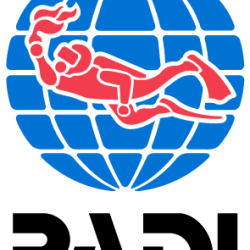
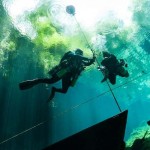
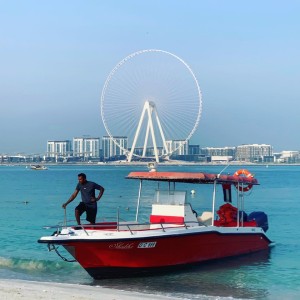












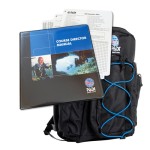



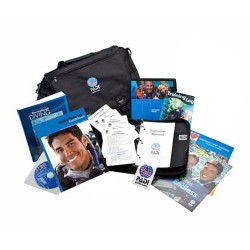

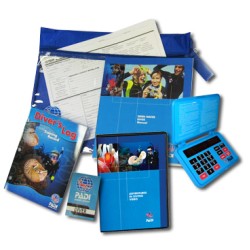

-870x812-250x250w.jpg)
-870x812-250x250w.jpg)
-870x812-250x250w.jpg)
-870x812-250x250w.jpg)
-870x812-250x250w.jpg)
-870x812-250x250w.jpg)
-870x812-250x250w.jpg)
-870x812-250x250w.jpg)
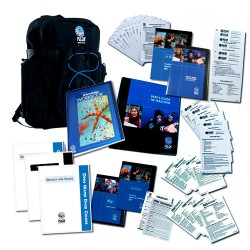

-870x812-250x250w.jpg)
-870x812-250x250w.jpg)
-870x812-250x250w.jpg)
-870x812-250x250w.jpg)
-870x812-250x250w.jpg)
-870x812-250x250w.jpg)
